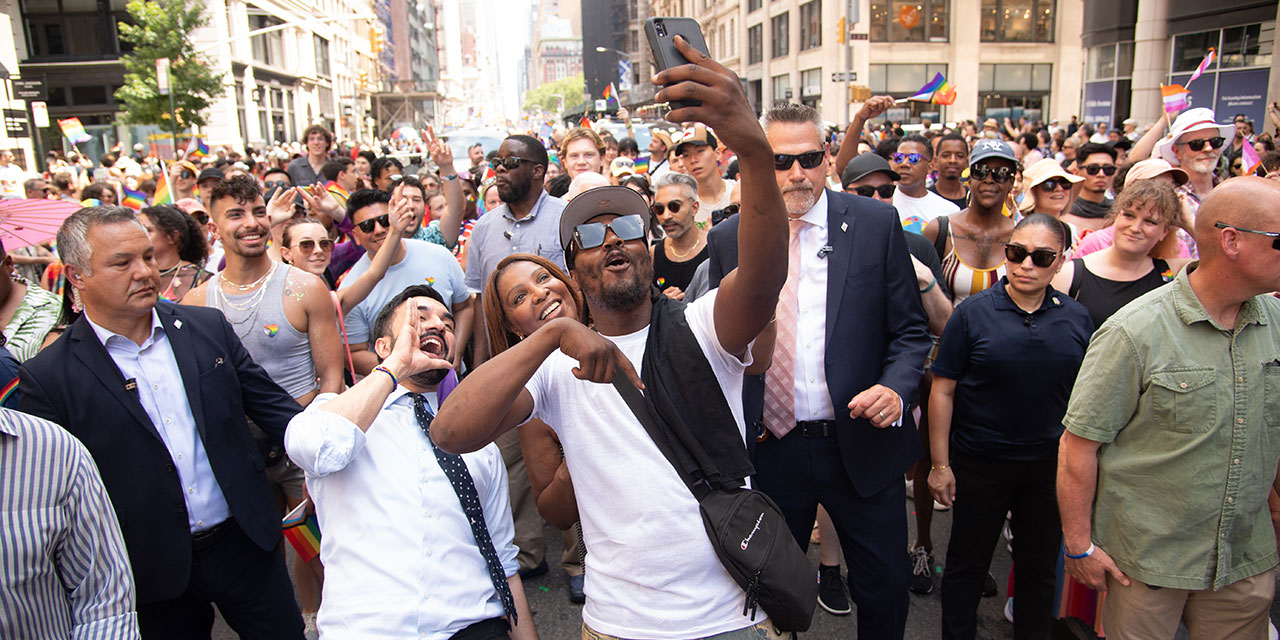
Last Tuesday, New York City temperatures approached triple digits, but the political heat was even higher. The city buzzed over the question: Could democratic socialist Zohran Mamdani overtake New York political icon Andrew Cuomo?
Pundits, pollsters, and the city’s old guard agreed that Cuomo—former governor and heir to a political dynasty—would coast to victory. But by late June, Mamdani, a state assemblyman polling at just 1 percent in February, had surged to 32 percent—and on Tuesday, he roundly defeated Cuomo in the primary. How did it happen?
Finally, a reason to check your email.
Sign up for our free newsletter today.
The forces behind the 33-year-old’s win are not unlike those that propelled the young Barack Obama, who charmed a generation of voters with youth, charisma, and cultural savvy. As with Obama, the secret to Mamdani’s success is not policy but what many call “the vibe.”
Mamdani didn’t just run a campaign; he curated an experience. With his signature three silver rings, photogenic smile, and what many online are calling a “humanizing tone,” he blended culture and politics into a lifestyle brand. His viral January 2025 video, in which he interviewed halal cart owners about rising chicken-over-rice prices, gained over 84,000 Instagram likes. It wasn’t just economic commentary—it was New York storytelling.
Mamdani’s social media campaign focused on a question he posed to his audience: “Every politician says, ‘New York City is the greatest city on the globe.’ But what good is that if no one can afford to live here?” A legitimate question, but one that Mamdani chose to answer through warm camera filters, Instagram reels, and speaking with “real” New Yorkers.
Mamdani’s marketing strategy wasn’t a fluke. His creative team, an agency called Melted Solids, ran the campaign like a media company. Co-founded by Anthony DiMieri and Debbie Saslaw (who have also worked with Bernie Sanders and Jamaal Bowman), the agency focused on narrative, authenticity, and cultivating a vibe. “People understand what’s authentic,” DiMieri told social media journalist Rachel Karten.
Mamdani delivered. His social media feeds were filled with upbeat, stylized videos of the candidate strolling through bodegas, confronting rent prices in a Pleasantville-inspired ad, and riffing with Kareem Rahma in a “Keep the Meter Runnin’” segment. Election Day brought out T-shirts reading “Hot Girls for Zohran,” including one worn by model Emily Ratajkowski, who encouraged her followers to support him. Celebrity endorsements—from Sex and the City’s Cynthia Nixon to singer Lorde to cult-favorite comedian Stavros Halkias—positioned Mamdani as the candidate of choice for the culturally fluent.
Mamdani wasn’t just promising free transit or rent freezes. He was selling a New York that people could believe in and post about. On Instagram and X, users posted early-voting selfies, photos of “I Voted” stickers, and pledges of support for “Zaddy Zohran.” One post read: “sometimes the most noble thing you can do is wake up in central brooklyn, eat greek yogurt, banana bread with peanut butter, and make a maple iced latte before libbing out and voting for socialist mayoral candidate zohran mamdani.”
Posts like this, which garnered enthusiasm, were complemented by 1960s-inspired campaign buttons, tricolored pop-art posters pasted across brick walls and mailboxes, and young people door-knocking and pictured holding posters on social media.
These images underscore how Mamdani’s campaign was about belonging. It became the hottest club in town: inclusive, stylish, and promising just enough utopia to feel radical. It wouldn’t cost you much (for now), just a vote.
The campaign played on what New York dubbed the “West Village Girl” phenomenon: a social-media-driven identity built on aesthetics, idealism, and aspirational consumption, which might involve standing in lines for hours for the latest pop-up shop or posting several TikToks to get a brand’s attention. If people are willing to line up for an hour at 8 a.m. to buy mini croissant cereal from L’Appartement 4F, why wouldn’t they wait in the heat to vote for Mamdani? Especially if it meant being part of something and having the receipts to prove it online. As Caitlin Flanagan put it, “in our isolated lives, the line is the point.”
Mamdani’s revolutionary appeal is ironic. According to the New York Times, he performed best among middle- and high-income voters, leading by 10 points or more among those groups. Cuomo, by contrast, led among low-income households. These preferences seem to reflect what Manhattan Institute senior fellow Rob Henderson calls “luxury beliefs”—progressive ideals most fervently held by those least affected by their consequences. “Mamdani’s campaign was a textbook case,” Henderson told me. “His proposals—fare-free transit, rent freezes, city-run grocery stores—appeal to affluent voters insulated from the fallout. Working-class New Yorkers were the least likely to vote for him.”
At a Free Press election-watch party on Tuesday, reporter Maya Sulkin said, “The people I see voting for Mamdani are the ones going to the Hamptons, not the ones working two jobs.” She attributed Mamdani’s appeal to people wanting to be part of the action.
Mamdani’s success also reflects the aestheticization of politics. We no longer live in a world where union endorsements and TV ads dominate the conversation. Instead, voters ask: What does a candidate’s personal brand say about the kind of person I become by supporting them? Gen Z and younger millennials gravitate toward campaigns that emphasize community-building and aesthetics. A strong marketing strategy, sharp social media presence, cultural fluency, and the ability to ride viral moments are now central to winning their votes.
What can Mamdani’s top rival in the upcoming general election—Mayor Eric Adams, now running as an independent—do to compete? His best hope is to run a viral campaign.
Adams already has the raw materials: memorable public images that live rent-free in New Yorkers’ heads. His nights at the exclusive Zero Bond club, getting his ear pierced at Claire’s postelection, his Fendi scarf subway moment, his eyebrow-threading video, and most recently, his appearance at the Sands of Persia hookah lounge in Queens—the mayor has Internet-worthy moments to spare. If Adams embraces these episodes and turns viral content into campaign messaging, as Donald Trump has done, he could craft a narrative that feels authentic, relatable, and rooted in his “common sense” political platform.
Until then, Mamdani is running the show and building a movement. The upstart not only won votes but also created a mood. As the line between politics and social-media culture becomes increasingly blurred, that mood may matter more than any platform.
Photo by Noam Galai/Getty Images
Source link


















